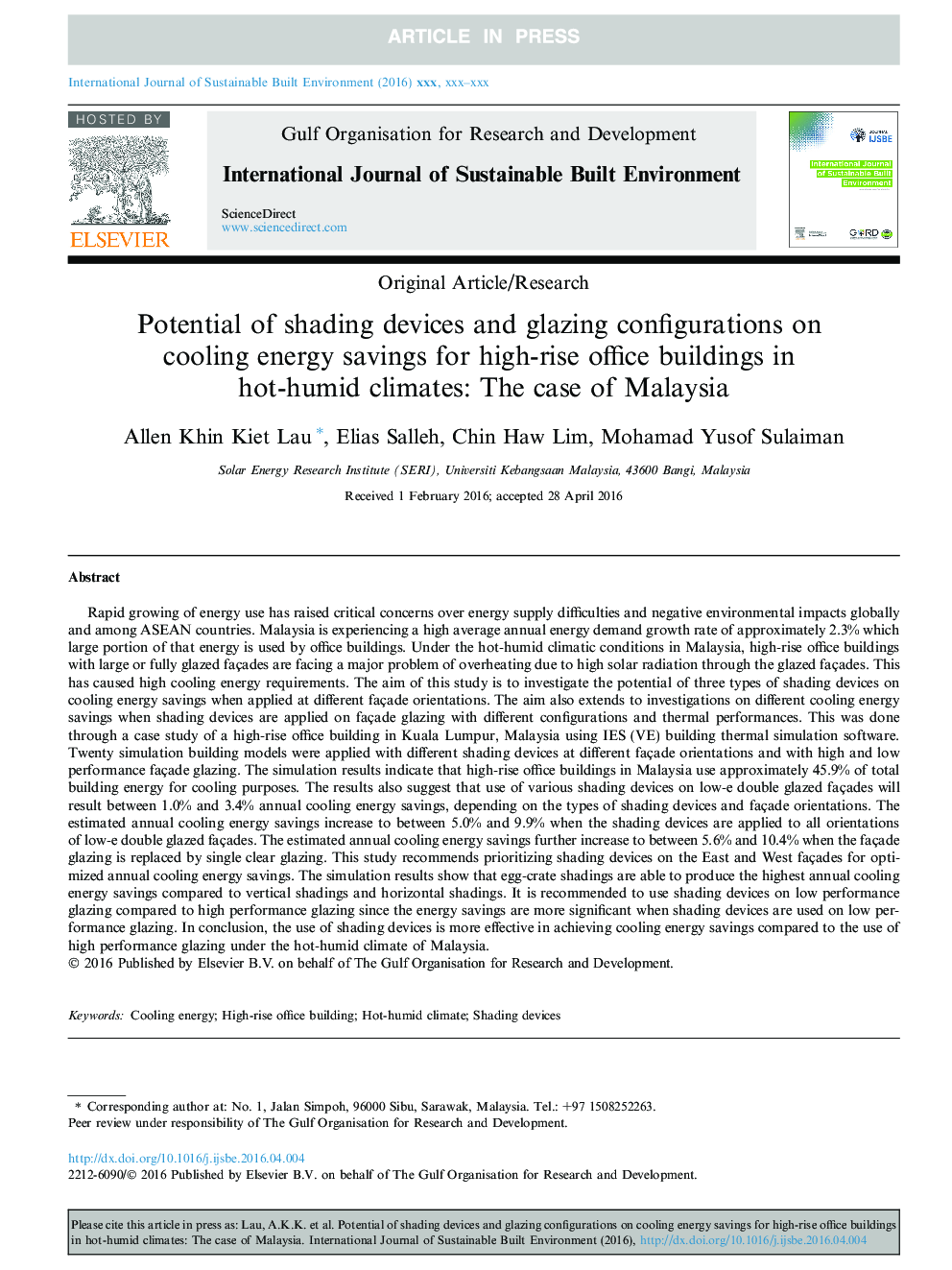| Article ID | Journal | Published Year | Pages | File Type |
|---|---|---|---|---|
| 6659563 | International Journal of Sustainable Built Environment | 2016 | 13 Pages |
Abstract
Rapid growing of energy use has raised critical concerns over energy supply difficulties and negative environmental impacts globally and among ASEAN countries. Malaysia is experiencing a high average annual energy demand growth rate of approximately 2.3% which large portion of that energy is used by office buildings. Under the hot-humid climatic conditions in Malaysia, high-rise office buildings with large or fully glazed façades are facing a major problem of overheating due to high solar radiation through the glazed façades. This has caused high cooling energy requirements. The aim of this study is to investigate the potential of three types of shading devices on cooling energy savings when applied at different façade orientations. The aim also extends to investigations on different cooling energy savings when shading devices are applied on façade glazing with different configurations and thermal performances. This was done through a case study of a high-rise office building in Kuala Lumpur, Malaysia using IES (VE) building thermal simulation software. Twenty simulation building models were applied with different shading devices at different façade orientations and with high and low performance façade glazing. The simulation results indicate that high-rise office buildings in Malaysia use approximately 45.9% of total building energy for cooling purposes. The results also suggest that use of various shading devices on low-e double glazed façades will result between 1.0% and 3.4% annual cooling energy savings, depending on the types of shading devices and façade orientations. The estimated annual cooling energy savings increase to between 5.0% and 9.9% when the shading devices are applied to all orientations of low-e double glazed façades. The estimated annual cooling energy savings further increase to between 5.6% and 10.4% when the façade glazing is replaced by single clear glazing. This study recommends prioritizing shading devices on the East and West façades for optimized annual cooling energy savings. The simulation results show that egg-crate shadings are able to produce the highest annual cooling energy savings compared to vertical shadings and horizontal shadings. It is recommended to use shading devices on low performance glazing compared to high performance glazing since the energy savings are more significant when shading devices are used on low performance glazing. In conclusion, the use of shading devices is more effective in achieving cooling energy savings compared to the use of high performance glazing under the hot-humid climate of Malaysia.
Related Topics
Physical Sciences and Engineering
Chemical Engineering
Chemical Engineering (General)
Authors
Allen Khin Kiet Lau, Elias Salleh, Chin Haw Lim, Mohamad Yusof Sulaiman,
